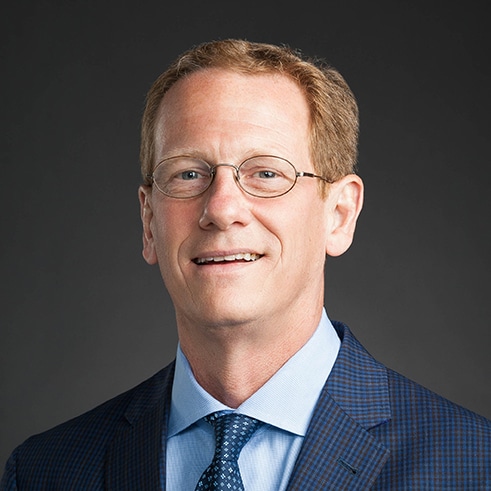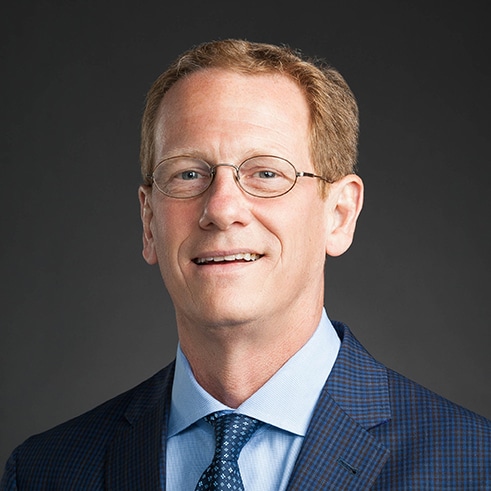The rotator cuff is a group of muscles and tendons that surround the shoulder joint, keeping the head of the upper arm bone (humerus) firmly positioned within its shallow socket and providing rotational strength to the shoulder. Through sudden trauma or repetitive use, these soft tissues can become damaged, sometimes to the point of tearing. This injury, which is known as a rotator cuff tear, is a common cause of shoulder pain and weakness. If these symptoms do not respond to conservative treatments, such as rest, medications, physical therapy, and injections, an arthroscopic rotator cuff tear repair may be considered.
A Renowned Orthopedic Surgeon on the Leading Edge of Shoulder Injury Treatment
Christopher C. Schmidt, MD, is a highly respected, board-certified orthopedic shoulder surgeon who practices in Pittsburgh, Pennsylvania, where he also serves as Director of the Shoulder and Elbow Fellowship in the Department of Orthopaedic Surgery of the University of Pittsburgh Medical Center (UPMC). In collaboration with a multidisciplinary team of orthopedic surgeons, bioengineers, mechanical engineers, fellows, and residents of UPMC, Dr. Schmidt performs extensive clinical and biomechanical research to continually improve arthroscopic rotator cuff tear repair techniques. The findings of these studies are integrated into best-practice guidelines that are utilized by his peers throughout the U.S.
Improving Shoulder Abduction After Rotator Cuff Tear Repair Surgery—the Role of the Rotator Crescent
Recently, Dr. Schmidt led an important research initiative to analyze the biomechanics of rotator cuff abduction. In essence, the study was based on the theory that, with an enhanced understanding of the intricacies of rotator cuff function, surgeons could improve surgical outcomes. Specifically, the objective of the study was to investigate the respective roles of the rotator cable and the lateral crescent area in force transmission and humeral abduction.
Through this study, Dr. Schmidt and his team found that the lateral crescent area appears to have a greater ability to transmit rotator cuff abduction force than the rotator cuff cable. This finding clarifies the reasons why superior abduction strength is often seen in healed rotator cuff tear repairs as compared to unhealed rotator cuff tear repairs, and also in graft-reconstructed repairs of irreparable rotator cuff tears as compared to partial repairs of irreparable rotator cuff tears.
Dr. Schmidt and his team have incorporated the results of this study into surgical techniques that are now being used by shoulder surgeons nationwide to improve abduction strength after rotator cuff tear repair surgery. The abstract of the study is reproduced below.
Rotator Crescent More Important Than the Rotator Cable for Shoulder Abduction
Schmidt CC, Spicer CS, Blake RJ, Zink TR, Davidson A, Smolinski PJ, Delserro SM, Miller MC, Smolinski MP
Shoulder and Elbow Laboratory, Department of Orthopaedic Surgery, University Pittsburgh Medical Center
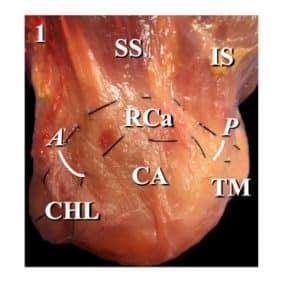
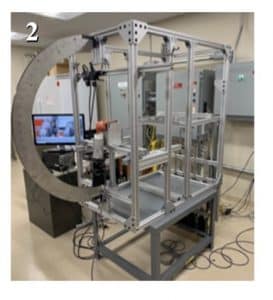
Results: At 0⁰ of abduction the abduction force was greater after cable release than with the cable intact (*P > 0.012).
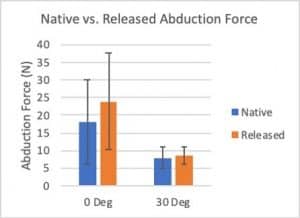
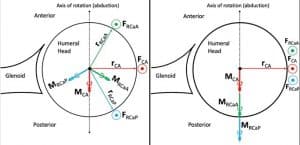
Clinical Relevance: The CA appears to have a greater ability to transmit rotator cuff abduction force than the RCa. This finding clarifies why superior abduction strength is seen with healed vs. unhealed rotator cuff repairs and graft reconstructed vs. partial repairs for irreparable tears [4,5].
References: (1) Arthroscopy 1993, 9; 611-16. (2) J Biomech 2007, 40; 2953-60. (3) J Anatomy 2010, 216; 643-49. (4) JBJS 2013, (95); 965-71. (5) Arthroscopy 2013, 29; 1911-21.
If you'd like to learn more about emerging techniques in arthroscopic rotator cuff tear repair surgery, contact Dr. Schmidt’s practice in Pittsburgh, PA, at (877) 471-0935 to request an appointment with Dr. Schmidt.

